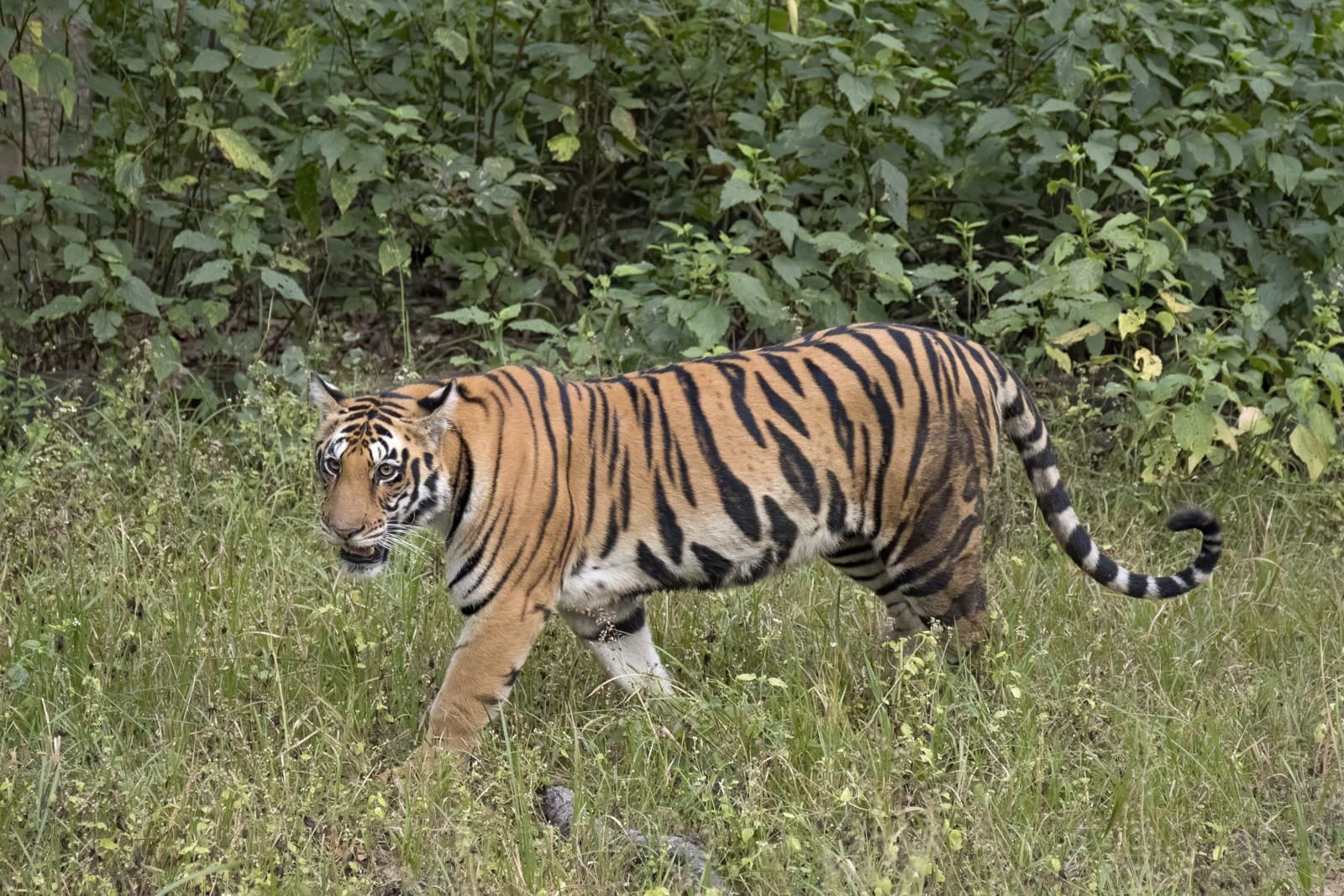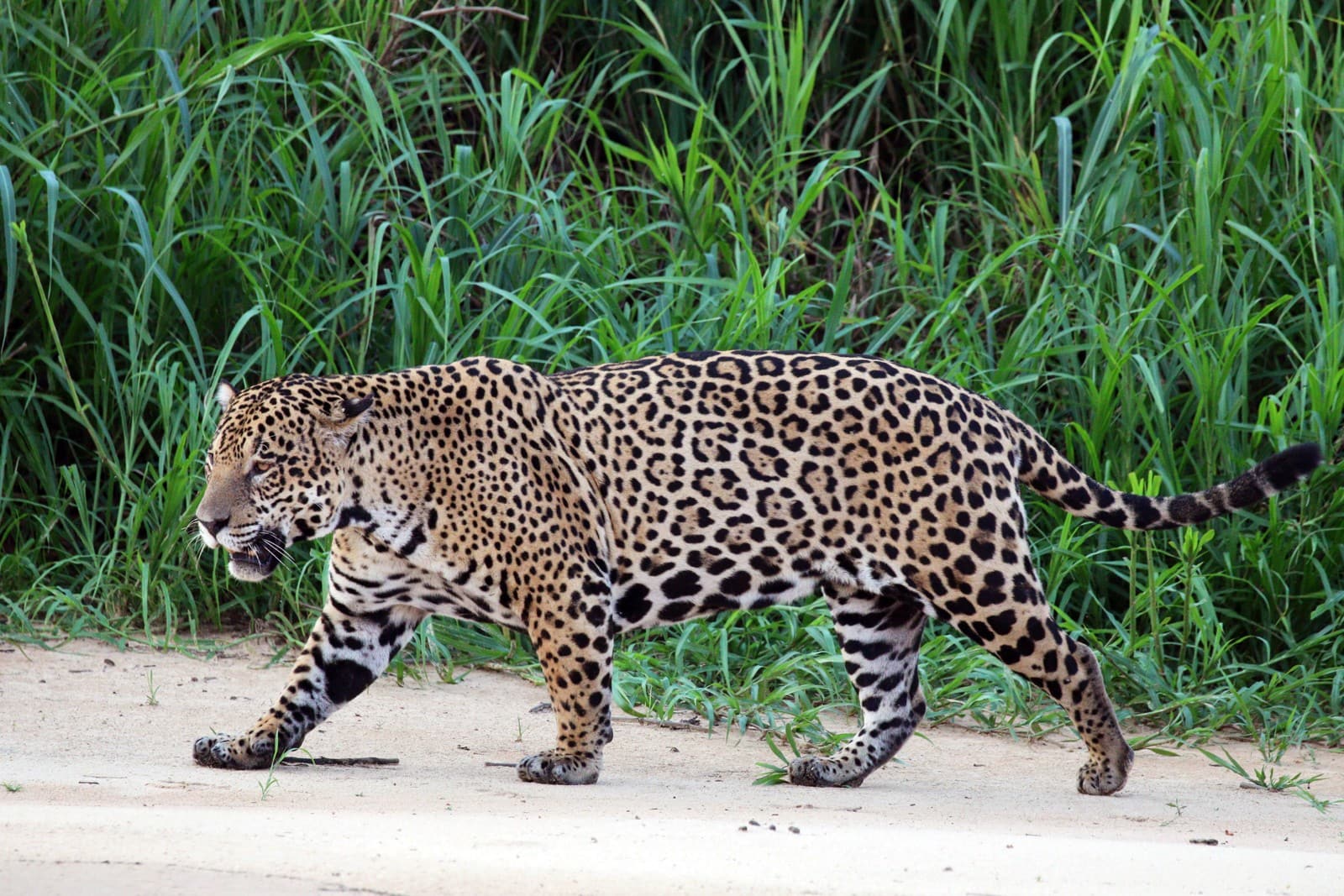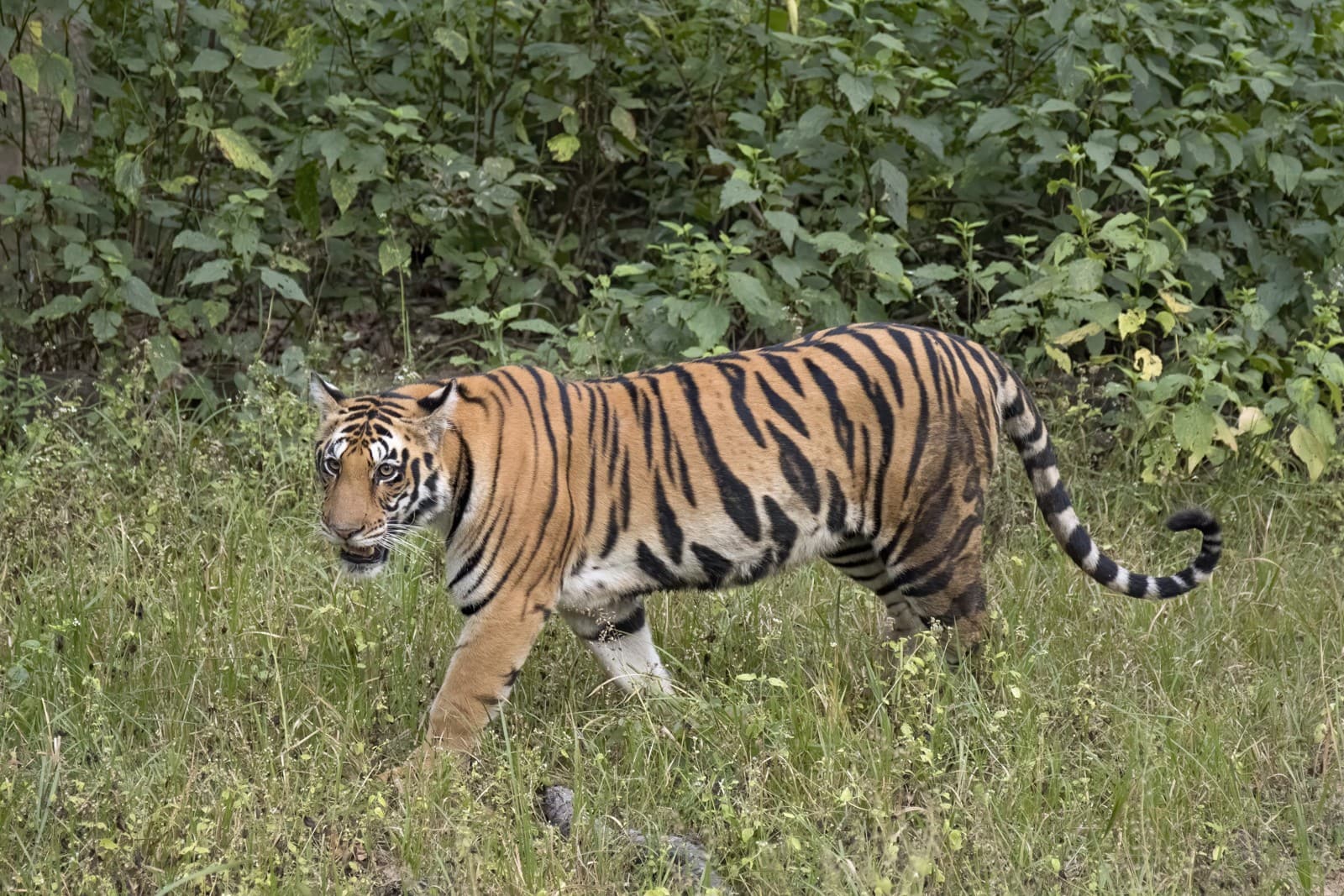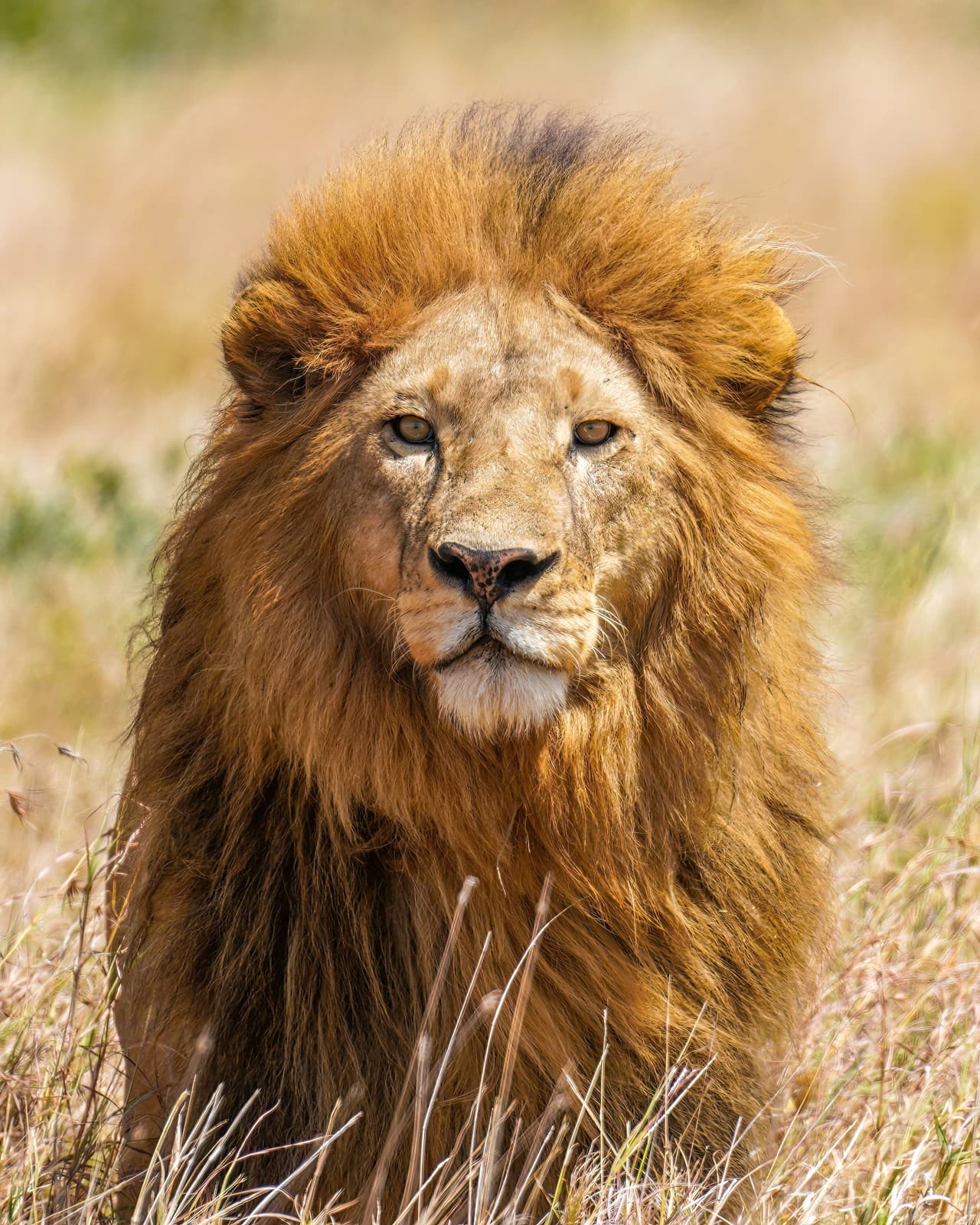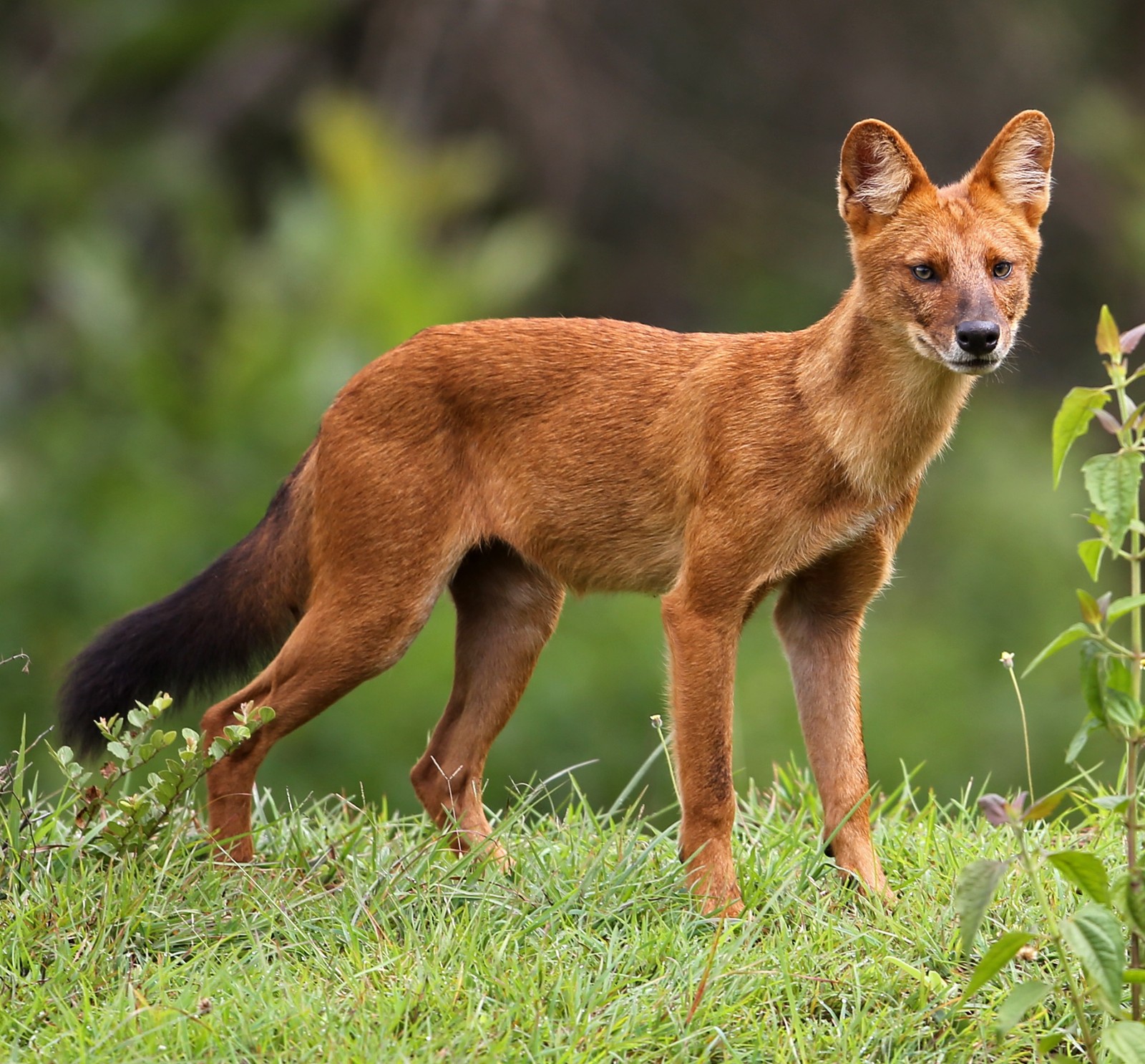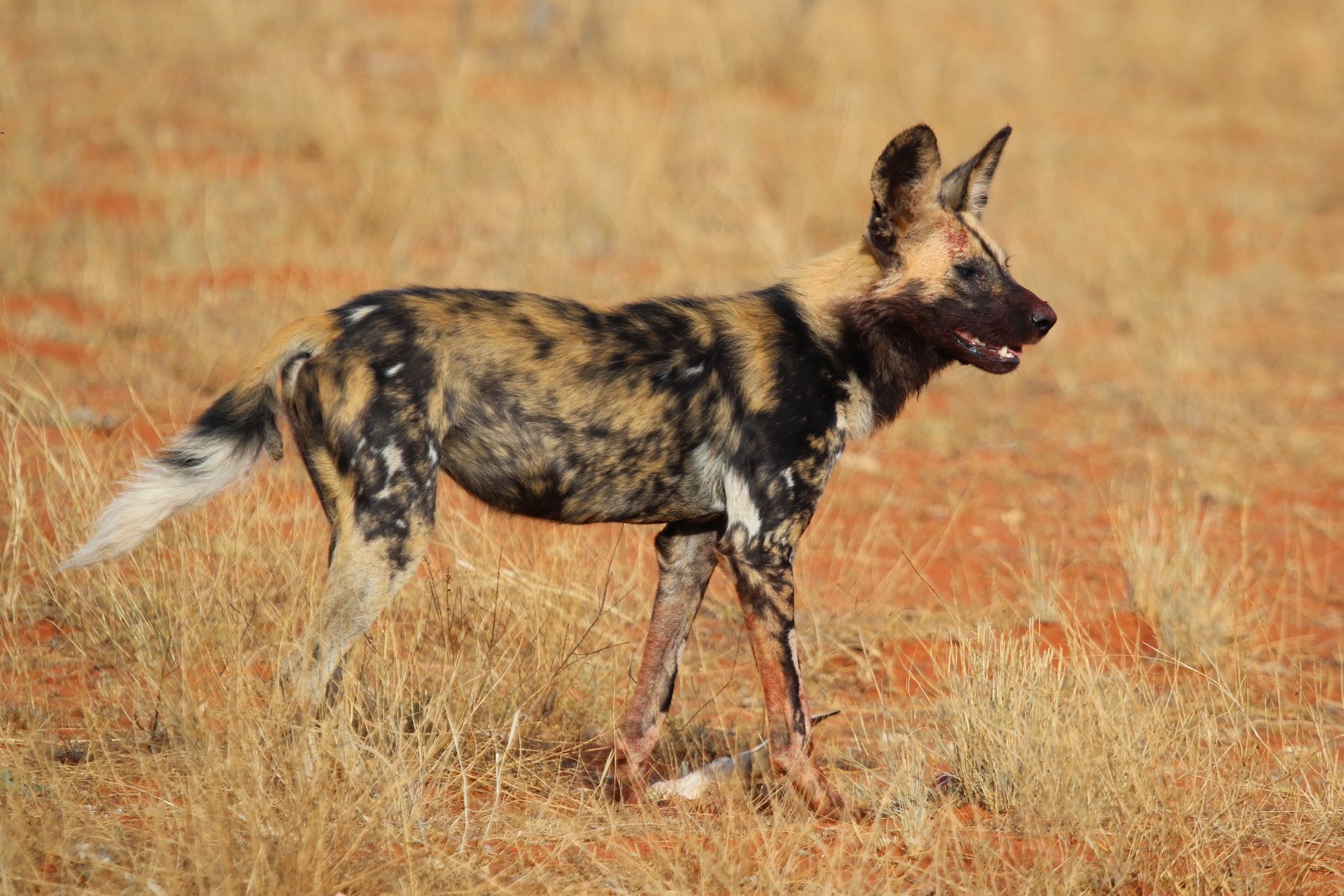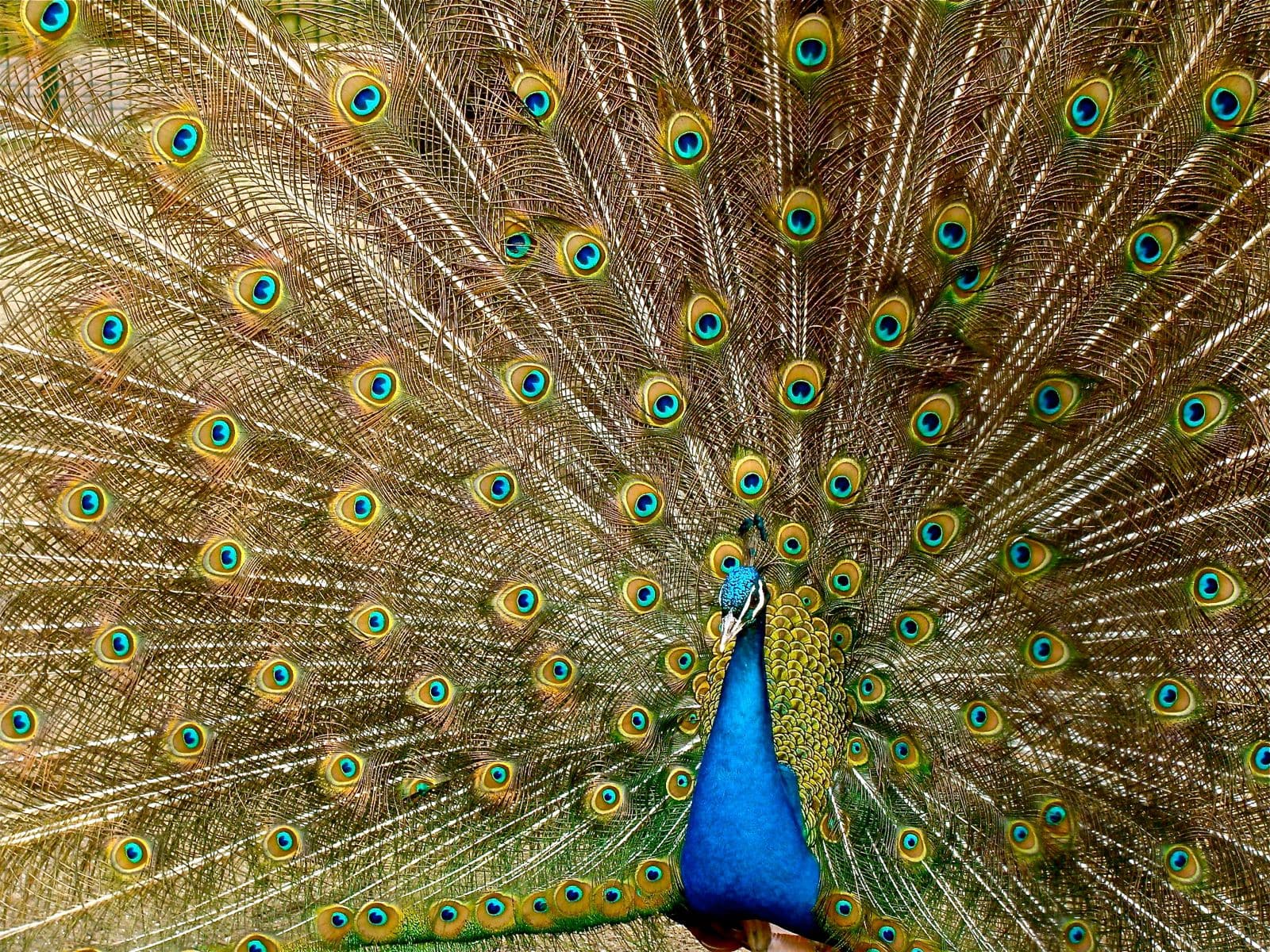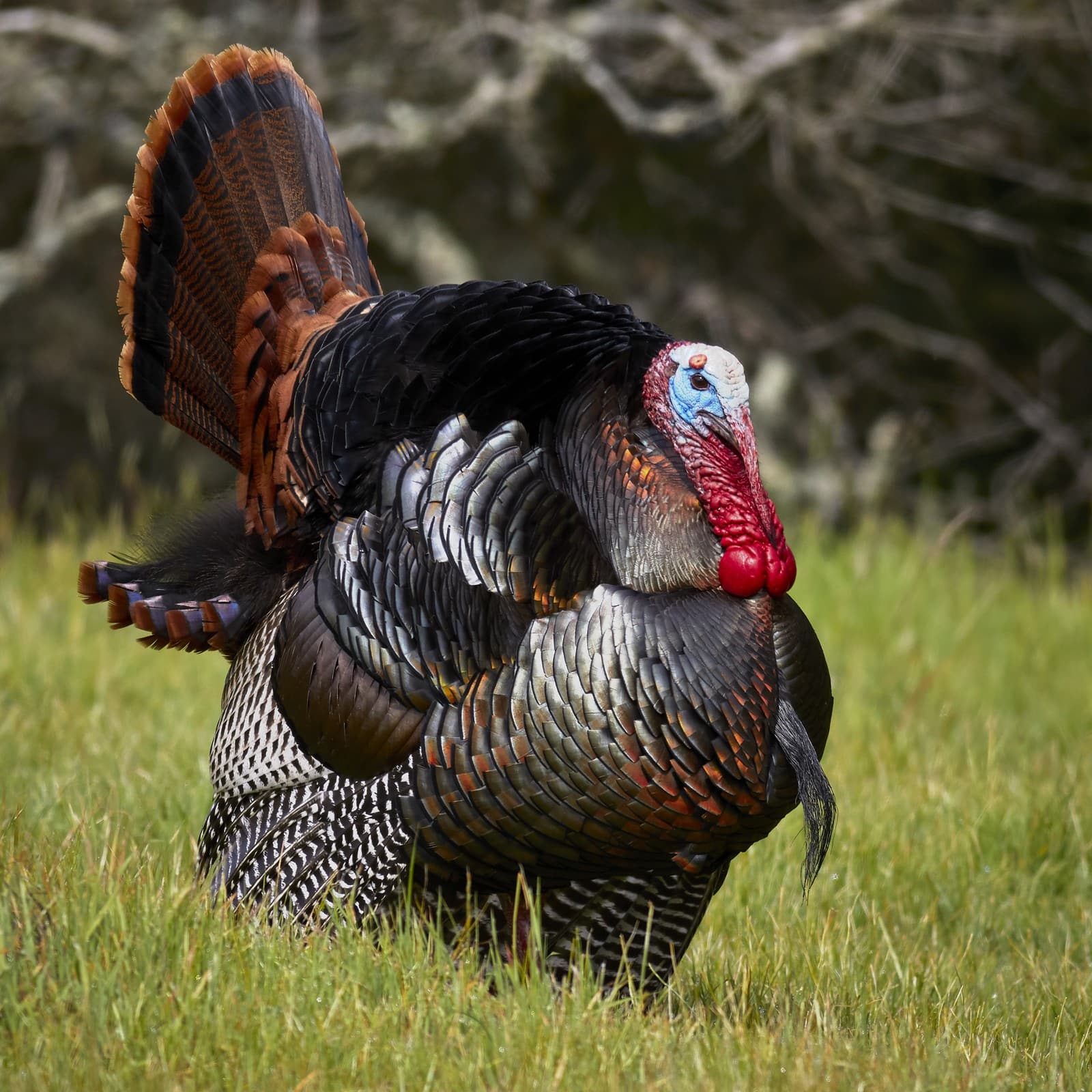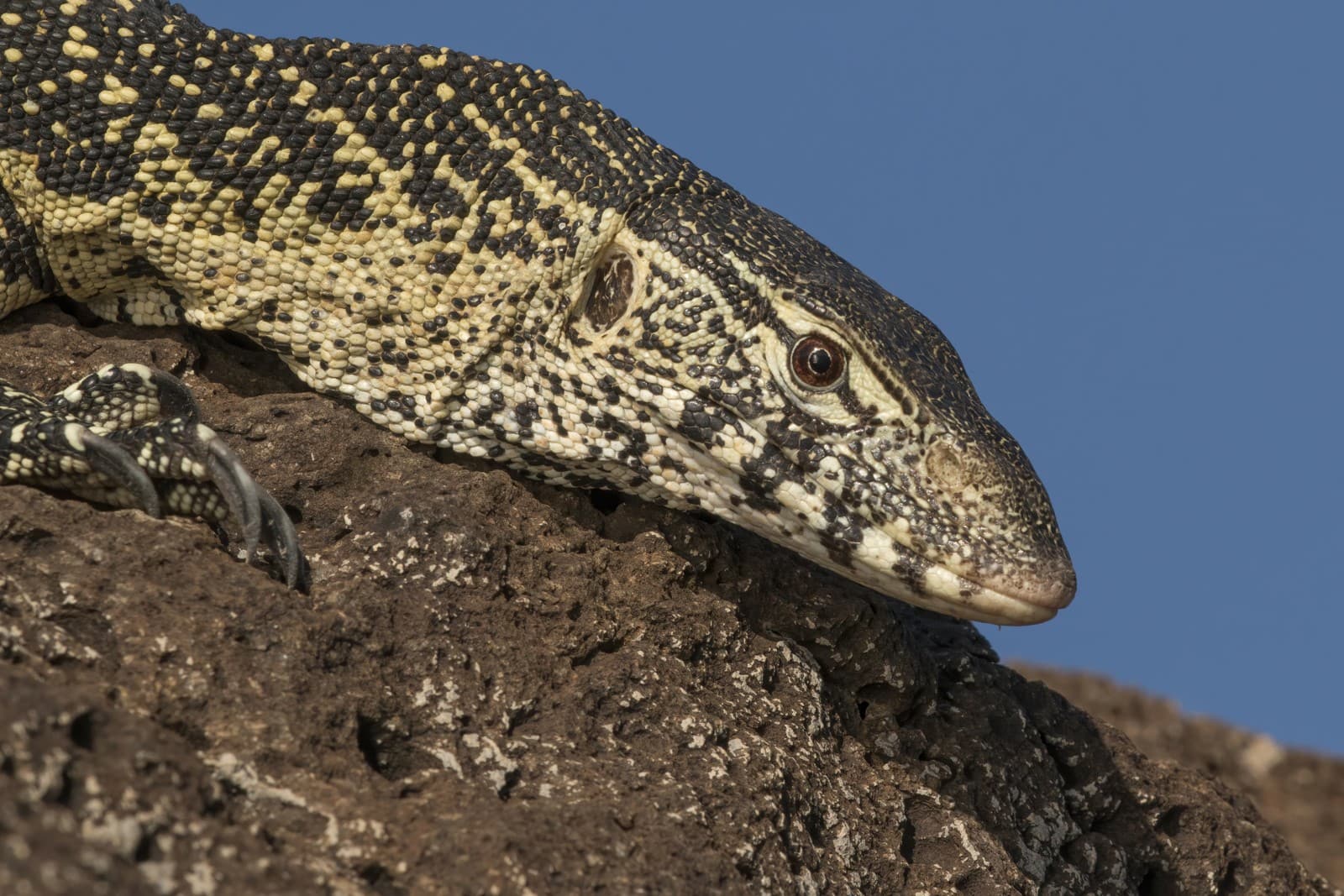Tiger vs Dhole: A Complete Comparison
When comparing tiger vs dhole, we’re examining two of Asia’s most formidable predators with remarkably different hunting strategies. Tigers, weighing up to 660 pounds (300 kg), are solitary apex predators that rely on stealth and raw power. In contrast, dholes—weighing just 44-66 pounds (20-30 kg)—hunt in coordinated packs of 5-12 individuals, taking down prey several times their size through sophisticated group tactics.
These fascinating predators share many of the same hunting grounds across Asia, from India’s dense forests to the Siberian taiga, yet they’ve evolved distinctly different approaches to survival. Their contrasting social structures and hunting methods offer a compelling glimpse into the diverse ways predators can dominate their ecosystems.
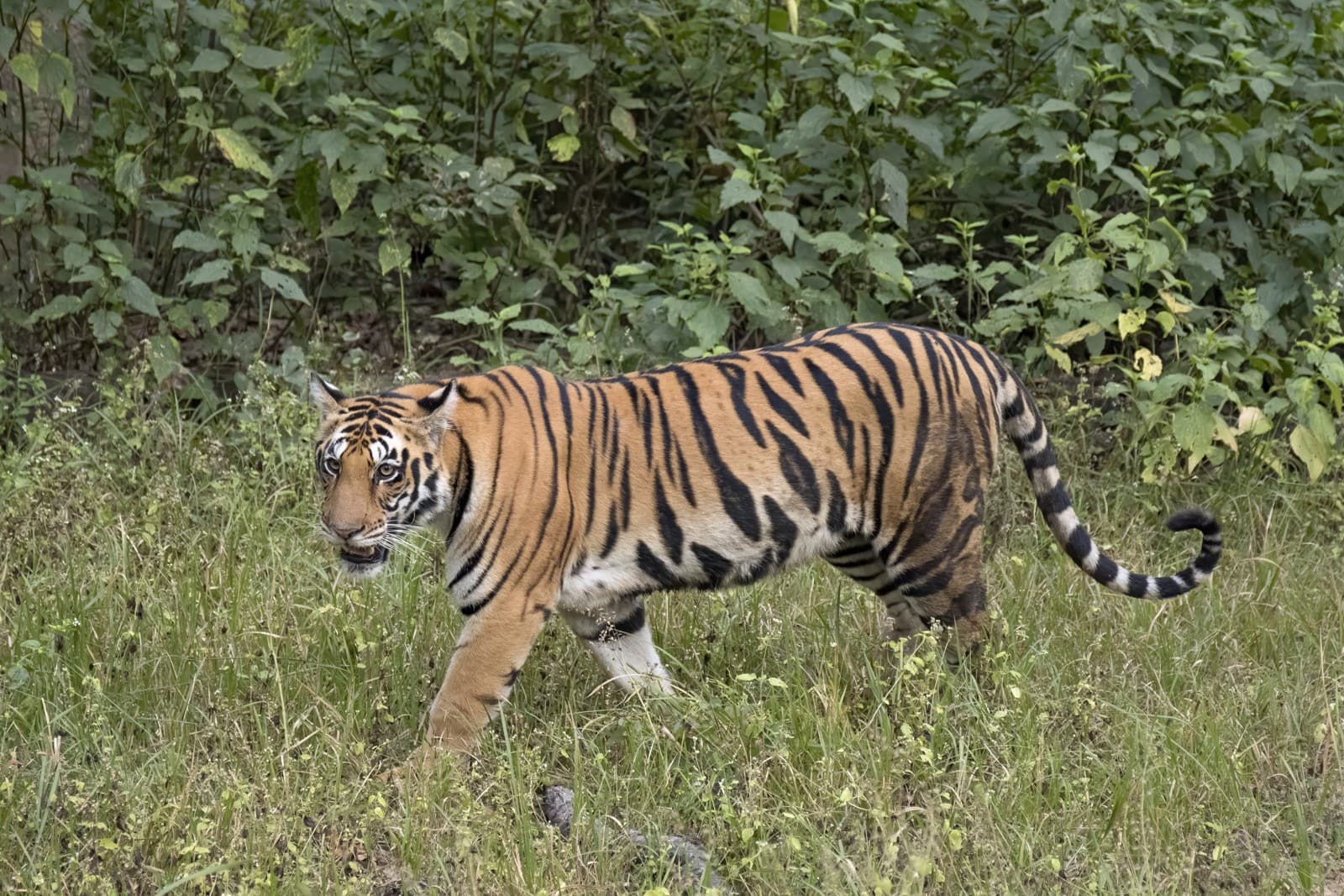
© Charles J. Sharp / CC BY-SA 4.0
The Bengal tiger exemplifies solitary hunting prowess, with muscular build and camouflage perfectly adapted for ambush predation in Asian forests.
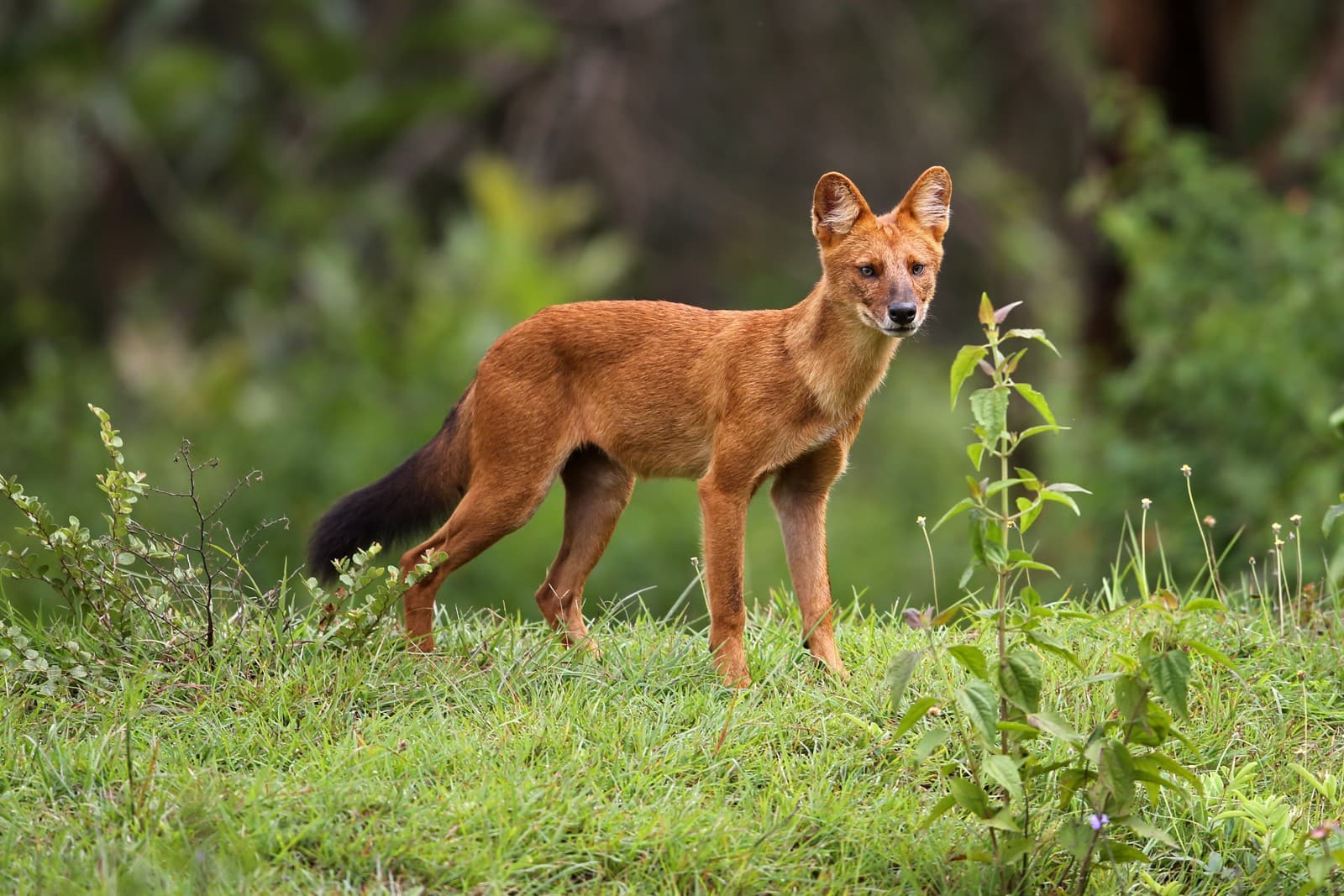
© Davidvraju / CC BY-SA 4.0
The dhole’s athletic build and alert posture reflect its pack-hunting lifestyle, with physical adaptations suited for endurance and group coordination.
Key Differences: Tiger vs Dhole
| Feature | Tiger | Dhole |
|---|---|---|
| Size | 8.7-12.5 ft (2.7-3.8 m) length | 3.3-4.3 ft (1-1.3 m) length |
| Weight | 220-660 lbs (100-300 kg) | 44-66 lbs (20-30 kg) |
| Social Structure | Solitary | Pack-living (5-12 members) |
| Hunting Style | Ambush predator | Cooperative pursuit hunter |
| Territory Size | 20-39 sq miles (50-100 sq km) | 8-23 sq miles (20-60 sq km) per pack |
| Prey Size | Large (sambar deer to gaur) | Medium to large (deer to wild boar) |
Hunting Strategies and Prey Selection
Tigers are ambush specialists, using their incredible strength and stealth to take down large prey single-handedly. Their muscular build allows them to subdue animals as large as adult gaur, which can weigh up to 2,200 pounds (1,000 kg). They rely on a powerful bite to the neck or throat, with bite force reaching 1,050 PSI.
Dholes, conversely, hunt in highly coordinated packs, using sophisticated vocalizations to coordinate attacks. Their endurance and pack tactics allow them to exhaust prey through persistent pursuit, often taking down animals 10 times their individual size. Unlike tigers, dholes begin consuming prey while it’s still alive, enabling them to feed quickly before larger predators arrive.
Habitat and Territory
Both species inhabit similar Asian ecosystems, but their territory usage differs significantly. Tigers maintain large, exclusive territories marked by scent and scratches, actively defending them against other tigers. A single tiger requires approximately 20-39 square miles (50-100 square kilometers) of territory to sustain itself.
Dhole packs operate in smaller territories of 8-23 square miles (20-60 square kilometers), but their ranges often overlap with other packs. They’re more adaptable to varied habitats, from dense forests to open steppes, though they prefer areas with good cover and access to water.
Conservation Status and Threats
Both predators face significant conservation challenges:
- Tigers: Approximately 3,900 wild tigers remain
- Dholes: Fewer than 2,500 mature individuals exist
- Both species face habitat loss and prey depletion
- Human conflict affects both, but tigers face additional poaching pressure
Who Would Win in a Confrontation?
While direct confrontations between tigers and dholes are rare, the outcome depends entirely on numbers. A single tiger typically dominates any one-on-one encounter with a dhole, given its massive size advantage. However, dhole packs of 5-12 members can successfully drive tigers away from kills and, in some documented cases, even force tigers to seek refuge in trees.
The relationship between these predators is more complex than simple competition:
- Tigers occasionally prey on individual dholes
- Dhole packs may harass tigers to protect their territory
- Both species generally avoid direct conflict when possible
- Pack size is the crucial factor in any interaction
Through millions of years of evolution, these remarkable predators have developed different but equally effective strategies for survival, demonstrating the diverse paths to success in nature’s complex web of predator-prey relationships.
